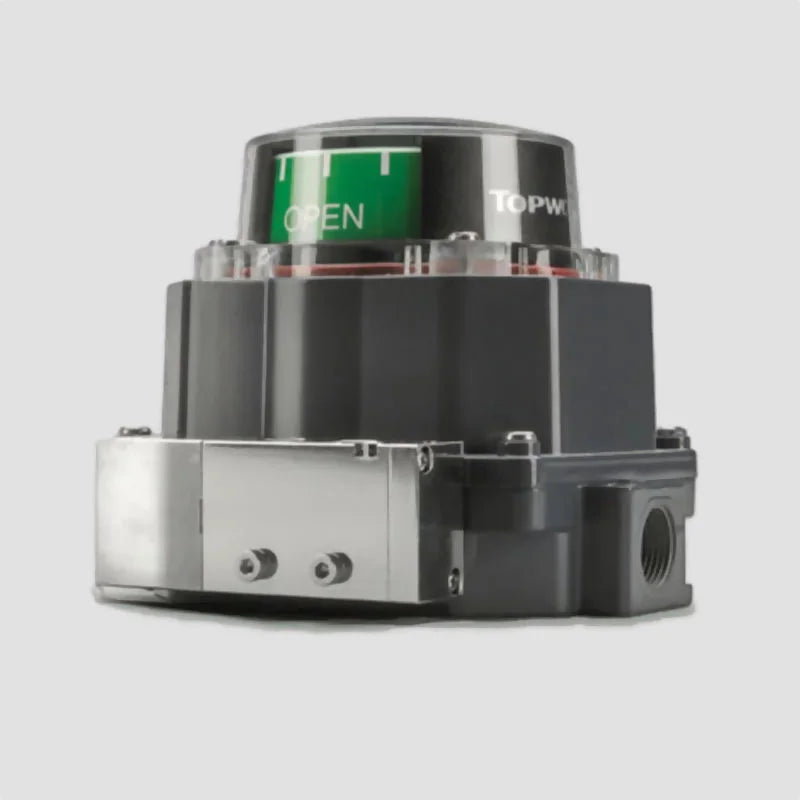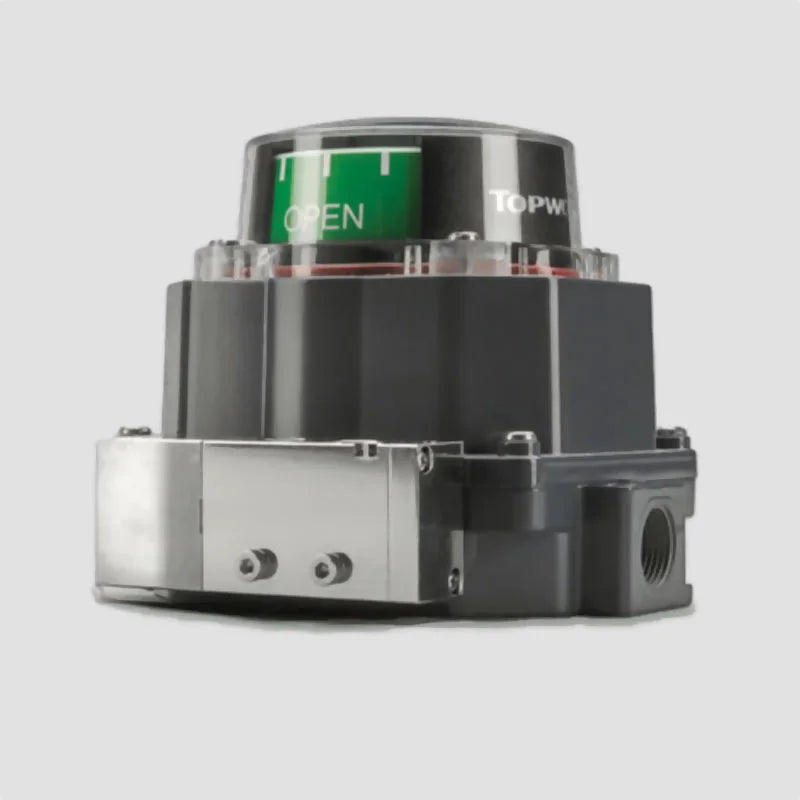Topworx Switchboxes
TopWorx Limit Switch Box TVL-R2GRNEM1A11 Valve Monitor
TopWorx Limit Switch Box TVL-R2GRNEM1A11 Valve Monitor
Couldn't load pickup availability
The TopWorx TVL-R2GRNEM1A11 Limit Switch Box offers advanced valve position monitoring with non-contact proximity sensors, ensuring long-lasting reliability and precision in harsh industrial environments. This model from the TopWorx TVL Series is specifically engineered for use in pneumatic on/off valve applications, delivering durable performance in industries such as chemical processing, oil & gas, wastewater treatment, and power generation.
Equipped with dual proximity sensors (inductive) and a NAMUR-standard mounting interface, the TVL-R2GRNEM1A11 provides accurate open/closed feedback while reducing wear and extending service life. Housed in a corrosion-resistant GRP enclosure with IP67 environmental protection, this valve monitor is suitable for both indoor and outdoor use—even in the most challenging conditions.
🔑 Key Features:
Inductive Proximity Sensors: Contactless detection for enhanced longevity and reliability
NAMUR Mounting Interface: Universal fit for quarter-turn pneumatic actuators
Clear Dome Indicator: Easy local identification of valve position
IP67 Protection: Resistant to water, dust, and harsh weather conditions
Glass-Reinforced Polyester Housing: Corrosion-resistant and lightweight
Dual 1/2” NPT Conduit Entries: Flexible wiring options for seamless integration
Wide Temperature Tolerance: Operates from -40°C to +85°C
Factory Preconfigured: Simplifies installation and reduces commissioning time
📊 Product Specifications
| Specification | Details |
|---|---|
| Model | TVL-R2GRNEM1A11 |
| Manufacturer | TopWorx (Emerson) |
| Series | TVL Series |
| Switch Type | 2 × Inductive Proximity Sensors |
| Visual Indicator | Dome-Style Open/Closed Indicator |
| Mounting Interface | NAMUR Standard |
| Enclosure Rating | IP67 |
| Material | Glass Reinforced Polyester (GRP) |
| Conduit Entries | 2 × 1/2” NPT |
| Operating Temperature | -40°C to +85°C |
| Certifications | CE, CSA, ATEX (subject to variant) |
| Typical Applications | Valve Automation, Hazardous Environments, General Process Control |
The TopWorx TVL-R2GRNEM1A11 delivers contactless, high-accuracy feedback in a rugged design built to withstand aggressive industrial settings. If you're looking to increase reliability, reduce maintenance, and streamline valve automation, this is a top-tier solution from one of the most trusted names in the industry.
📞 Need expert advice or fast dispatch? Reach out to our team today – we're here to help!
Share

FAQ's
What is the difference between a valve and an actuator?
What types of actuators are available?
The main types of actuators are:
Pneumatic actuators – use compressed air for fast, reliable operation.
Electric actuators – use electrical power for precise control.
Hydraulic actuators – use fluid pressure for high-torque applications.
Each type offers unique advantages depending on the environment, media, and system control needs.
How do I choose the right actuator for my valve?
To select the correct actuator, consider:
Valve type and torque requirement
Power source available (air, electric, or hydraulic)
Operating environment (temperature, humidity, hazardous area)
Control signal type (on/off or modulating)
Matching actuator torque and compatibility with the valve’s ISO mounting ensures reliable performance.
What are the main types of valves used in automation?
The most common valves in automated systems include:
Ball valves – for tight shutoff and quick operation.
Butterfly valves – for larger flow control with compact design.
Globe valves – for precise throttling and flow regulation.
Check valves – to prevent backflow.
Gate valves – for full bore flow isolation.
What’s the difference between a double-acting and spring-return actuator?
Double-acting actuators use air (or power) to both open and close the valve.
Spring-return actuators use air to open (or close) the valve, and a built-in spring to automatically return it to a safe position when power or air is lost — ideal for fail-safe operation.
How often should valves and actuators be serviced?
Regular maintenance intervals depend on operating conditions, but a good rule of thumb is to inspect every 6–12 months.
This includes checking for leaks, lubrication, seal wear, and actuator responsiveness to prevent unexpected downtime.

